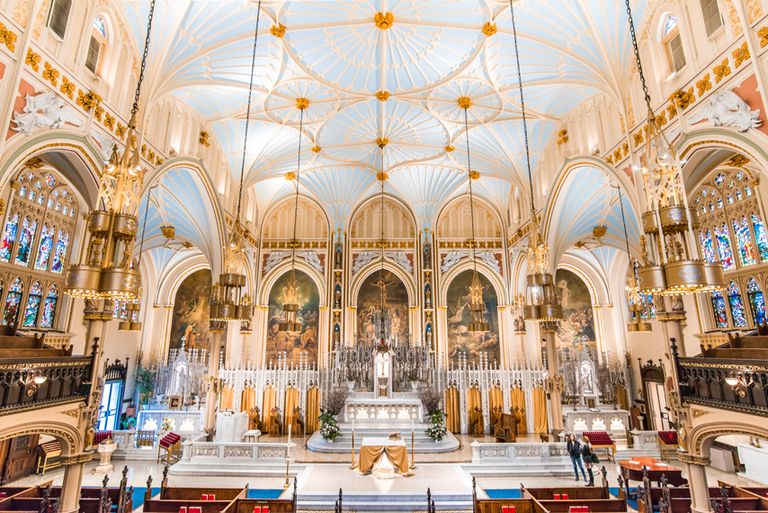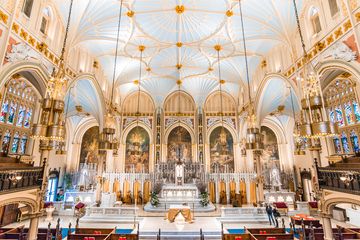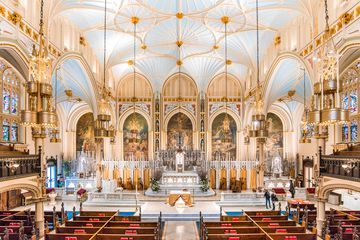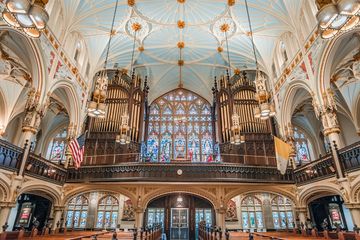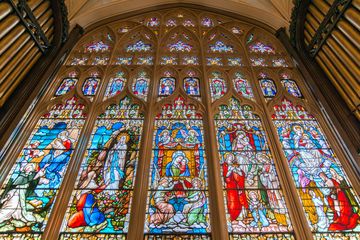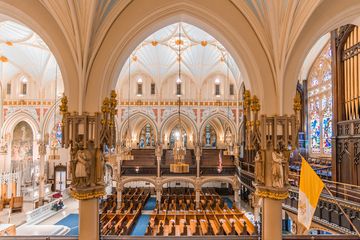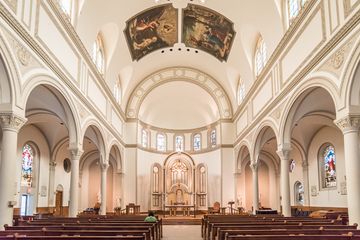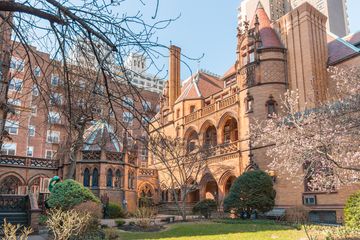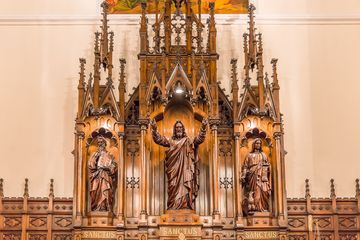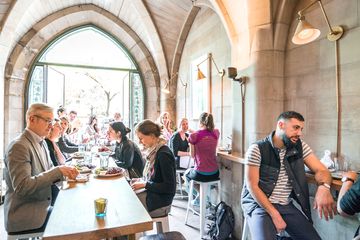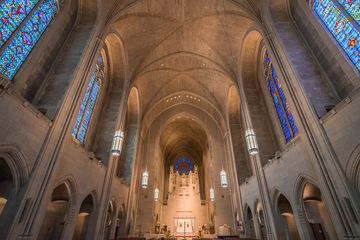Gregory Fryer, the pastor of Immanuel Lutheran Church, is thankful for his church for many reasons. First of all, it was formed in the winter of 1863, right in the middle of the Civil War. Gettysburg was only a few months away, but Gregory sees the founding of Immanuel as proof that it was still "a holy time. " "It was the creation of a new church, right in the middle of wartime, " he said, with the soft, deliberate tone of a man who has spoken many sermons. The congregation met in various places on the Upper East Side, including what is now St. Elizabeth of Hungary, for the first two decades before building the 88th Street church. Gregory is grateful that that church, dedicated in 1886, was built with great care by the local German immigrants. The same men who worked in Rupert's brewery, ran the neighborhood bakeries, and lived in the tenement houses painstakingly built this beautiful church on 88th and Lex. "I'm honored every time I set foot in it, " Gregory asserted. Many of the immigrants were woodworkers, so the church stands out from its neighbors in that it is filled with wooden structures and hand-carved decorations from the Black Forest in Germany. The bells are also imported from Germany and were gifts from Empress Victoria in the late 1800s. They are named "Glaube, " "Hoffnung, " and "Liebe" which mean "faith, " "hope, " and "charity. " The bells are rung by hand at the start of each service and during the consecration – a practice that is quite fun for those who participate, judging by the twinkle in the pastor’s eye as he mentioned, “We enjoy pulling on the rope. ”"My call to be pastor here reflects the change of the neighborhood, " Gregory stated. He is the first pastor who does not speak German. "I am distinguished by a deficiency, " he said. The church stopped offering German services in the 1970's, resulting in some German-speakers moving to Zion St. Mark. Some of the older congregants, who have been coming to the church for over fifty years, still speak the language, but Gregory jokingly assured me that they "forgive" him for not knowing it. The older congregants are referred to as "the power table, " since they always sit together at coffee hour. Gregory calls them the "guardians of the wisdom of the neighborhood. " They are part of what Gregory describes as "a very diverse congregation. "Immanuel fills a very important niche in New York: As of 2016, it is the only church in Manhattan that is part of the North American Lutheran Church. They were originally part of the Evangelical Lutheran Church in America, the more liberal group, but decided to become more moderate in order to give other Lutherans a place to worship in the city. After a year of debating, they applied to the NALC and were accepted in record time. When I visited in 2016, the church had just finished renovating its slate roof and steeple. "It took every nickel in sight to do it, but we did it right, " Gregory said proudly. The church could have used a cheaper material to fix their roof, but the congregation felt strongly that the church should honor the work that the original builders did by using the same materials. The process was long and arduous. Gregory told me how every detail was discussed at length and showed me one of the original nails, which became a centerpiece of a discussion about what hardware to use. Every congregant did his or her part. For example, Gregory took the bucket that he used to catch water from a leak in the roof and invited the children to a "noisy collection, " where they dropped coins into the bucket. Before commencing the work, Immanuel had the building appraised by a structural engineer, who declared it "solid as a rock, " suggesting that the congregation could hang a 747 jet from the rafters. A few months after the project was completed, the church was awarded the “Carnegie Hill Neighbors Enrichment Award” in recognition of the skillful renovation. An added bonus of the new roof is that the church is now insulated. Ever since a nearby department store's demolition project destroyed the church's plaster roof, it has gone without insulation. The church used the settlement money from the department store to buy the parsonage apartment where Gregory and his wife raised their family. The church never replaced the plaster because they realized that the church was more beautiful with the exquisite craftsmanship of the roof beams exposed – the rafters were never meant to be seen, but the German woodworkers put great care and skill into them anyway. Not to mention, the acoustics were greatly improved.
